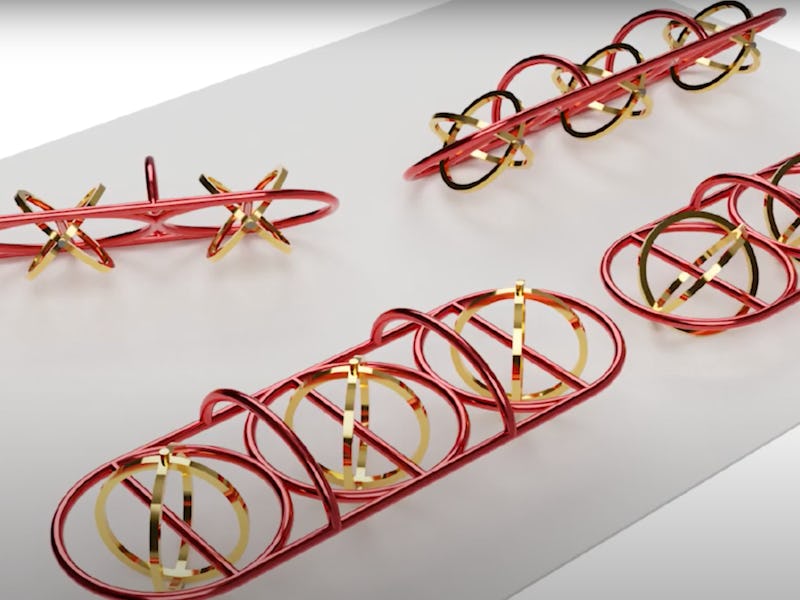Culture
Scientists create microbots for drug delivery inside blood vessels
Micro-sized machines that look and move like chains in the patient's body.

Have you ever imagined robots that are so small that they are capable of technically navigating and maneuvering through our bodies, up and down incredibly confined and delicate places like our blood vessels? It sounds like a terrifically impossible venture but scholars at ETH Zurich have made microbot mobility through our bodies very much a reality. This is what a chainlike microbot — in which the red links are made of plastic and the gold links are made of metal — looks like under a microscope.
These little bots are capable of delivering drug payloads right within the human body. Depending on their shape and sizes, their mobility differs as is evident in the video. According to lead author Carlos Alcantara, whose statement appeared in the 3D Printing Industry, "Metals and polymers have different properties, and both materials offer certain advantages in building micro-machines. Our goal was to benefit from all these properties simultaneously by combining the two."
Enter remote treatment — Scientists at the institution of ETH Zurich note that they combined soft lithography — which is essentially a combination of techniques that encourage the fabrication and manipulation of materials with a good deal of emphasis on elastomeric structures, so the resulting product is flexible and soft — and electrochemical deposition. The subsequent multi-material vehicles are capable of moving in magnetic fields and their bio-compatibility renders them friendly to foreign environments like a patient's body which may need remote treatment.
If mainstreamed (which could take a good while, so don't hold your breath) the application of microbots in treating illnesses could revolutionize how medical and surgical treatments requiring drugs are administered to those in need. What makes these micro-machines especially useful is how these little bots are capable of navigating into remote parts of the body, which often necessitate delicate procedures that can otherwise be difficult for medical experts, and costly for patients.
For now, molecular shuttles have been applied to macroscopic machinery but they are yet to be used frequently on a microscale. Mass production of this material is hard to promise because the integration of interlocked structures — like a plastic chain linked to a metallic chain — in a microscopic setting can be tricky and often fails. But the good news is that ETH Zurich scholars have been working on these fascinating helix shuttles for years now. And if they can work out the wrinkles, we might see these little deliverers applied to highly common surgical tools like stents, which could save lives.